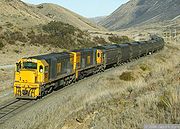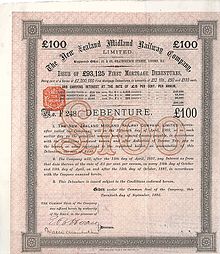Midland Line
| Rolleston-Greymouth | |||||||||||||||||||||||||||||||||||||||||||||||||||||||||||||||||||||||||||||||||||||||||||||||||||||||||||||
|---|---|---|---|---|---|---|---|---|---|---|---|---|---|---|---|---|---|---|---|---|---|---|---|---|---|---|---|---|---|---|---|---|---|---|---|---|---|---|---|---|---|---|---|---|---|---|---|---|---|---|---|---|---|---|---|---|---|---|---|---|---|---|---|---|---|---|---|---|---|---|---|---|---|---|---|---|---|---|---|---|---|---|---|---|---|---|---|---|---|---|---|---|---|---|---|---|---|---|---|---|---|---|---|---|---|---|---|---|---|
| Route length: | 212 km | ||||||||||||||||||||||||||||||||||||||||||||||||||||||||||||||||||||||||||||||||||||||||||||||||||||||||||||
| Gauge : | 1067 mm ( cape track ) | ||||||||||||||||||||||||||||||||||||||||||||||||||||||||||||||||||||||||||||||||||||||||||||||||||||||||||||
|
|||||||||||||||||||||||||||||||||||||||||||||||||||||||||||||||||||||||||||||||||||||||||||||||||||||||||||||
The Midland Line is a railway line on New Zealand's South Island . It connects Christchurch and Greymouth by means of a spectacular route through the New Zealand Alps and is now mainly of tourist importance. The railway line is 212 km long, single-track, non-electrified and laid out in the gauge of 1067 mm used in New Zealand .
Routing
The line actually begins in the east in Rolleston , the trains use the Main South Line from Christchurch to Rolleston . To Springfield Canterbury level is crossed before the route gains altitude and the ravine at the Waimakariri River reached. The route has five larger bridges, five viaducts, seventeen tunnels, the longest of which is the Otira tunnel at 8.5 km , which also cuts through the mountains between Arthur's Pass and Otira . The highest point of the route is reached at Arthur's Pass, from here the route descends again towards Greymouth.
Building history
The first gold discoveries on the west coast at the beginning of the 1860s led to the establishment of a carriage connection through the New Zealand Alps over Arthur's Pass from 1866. At the same time, the first ideas for a rail link arose in the districts of the Canterbury and Nelson region . Initially, a connection from Hokitika via the Malvern Hills was planned, in order to then create a connection to the White Cliffs route in the east. This was supposed to cross the Alps at Brownings Pass, but this route was quickly not pursued for technical reasons. Further plans pursued a more northerly route over Adas Pass or Amuris Pass, but in 1883 it was decided to lead the route over Arthur's Pass. Despite the expected transport of wood and coal, the government initially rejected the construction of a route as not economical, but allowed private companies to build this route. So in 1885 a private company, the New Zealand Midland Railway Company, was formed, which began construction in 1886. Until this company went bankrupt in 1895, only 120 km could be built. From 1900 the government continued construction. By 1900 the line was built from the east to Otira and from the west to a provisional Broken River station. The line was then extended to Cass in 1910 and Arthur's Pass in 1914.
Between Otira and Arthur's Pass, it was necessary to build the 8.55 km long Otira tunnel , which has a gradient of 1:33. The tunnel breakthrough was in July 1918, and the entire route was inaugurated on August 4, 1923.
Since steam locomotives could hardly be used with the length and gradient of the tunnel, the 14 km section from Otira to Arthur's Pass was electrified with 1500 V DC. Five electric locomotives of the Eo series were used on this section. These locomotives were replaced in 1968 by five new locomotives of the Ea series (Toshiba, Japan). These in turn were in use until 1997, and it was decided not to continue electrical operation, but only to use diesel locomotives. A combined solution of fans and a door on the lower side of the tunnel (towards Otira) was used for the air conditioning of the tunnel. Nowadays the coal trains are hauled by diesel locomotives of the DX series.
Transport offer
Passenger traffic
The only regular connection for passenger traffic on this route is the TranzAlpine train , which runs here daily.
Freight traffic
The route has an important role in freight traffic. There are several coal trains on the route, other commodities are: wood, cement and dairy products (serving the Westland Milk Products works in Hokitika).
swell
- Geoffrey B. Churchman, Tony Hurst: The railways of New Zealand. A journey through history . 2nd Edition. transpress New Zealand, Wellington 2000, ISBN 0-908876-20-3 .
Individual evidence
- ↑ Tunnel 11 was cut in May 2011, tunnel 19 in 2010. They no longer exist: New Zealand Railfan [magazine] Dec. 2011, p. 20.

